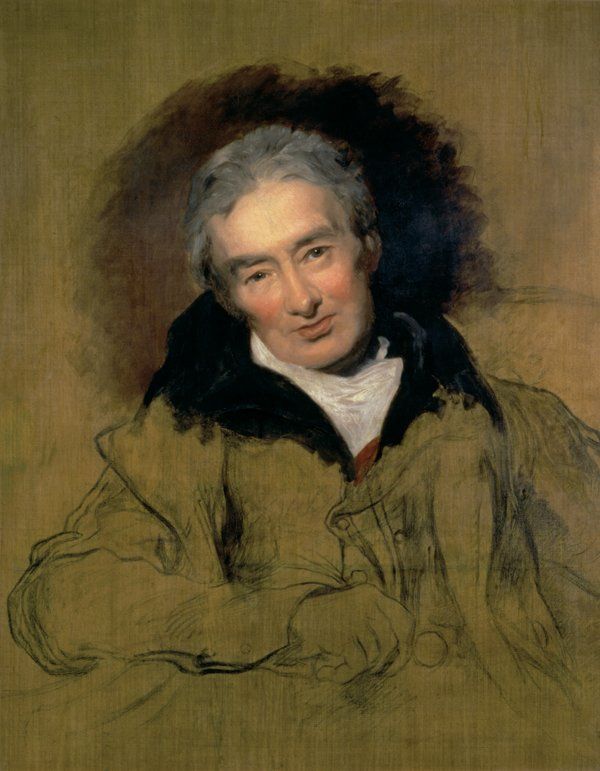
No one has ever been better at capturing celebrities than British painter Thomas Lawrence. His pictures of the giants of the Napoleonic era—the Duke of Wellington after Waterloo, George IV of England, Tsar Alexander I—capture the "fire in the eye," as was said in his day, or reveal "his subject's inner life," in the terms of a survey of his work now at the Yale Center for British Art.
Take Lawrence's portrait of the abolitionist William Wilberforce. It isn't finished, but two eyes in a face are enough to convey a life racked with pain (Wilberforce suffered from skeletal degeneration) but one that was also marked by a fine cause.
Or could my notes be confused? Surely that unfinished portrait could only be the Duke of Wellington himself. Who else could look as steely as flint but with the private "softness" a friend saw in Lawrence's portrait of him? Or perhaps this is Lawrence's famous portrait of Sir Francis Baring, who funded the Napoleonic wars. Has there ever been a better image of financial ferocity?
By now I will have made my point: the bromide about great portraits is that they capture "inner lives." It turns out, however, that you need to have decided beforehand what kind of life has been captured, to be sure of the interiority you're witnessing.
Mona Lisa herself has been variously described as straightforwardly cheerful (in her own era), as brimming with femme-fatale lust (in the vixen-obsessed 19th century), and as cryptic and opaque (the 20th-century view).
But then, does it really matter whether any portrait actually does instantly convey its sitter's hidden self? Did any viewer of a portrait of Wellington, not knowing it was him, need to sense the true depths of his warrior soul? What a great portrait really needs to do is act as a vehicle for what people already know about someone. Rather than accurately capturing any fixed set of emotions, portraits need something you might call emotional-ish-ness.
That's where Lawrence excelled. There's a vast amount of raw personality on view in his art: his children are perfectly appealing, his orators eloquent, his beauties delightful. His 1806 portrait of the gorgeous Lord Granville Leveson-Gower, an Adonis of his day, is overwhelmingly alluring. Depending on what they had hoped to see, some viewers might have read him as a smoldering rake, while others might have found in him a noblehearted beau. Lawrence was born in 1769, was a star already by his early 20s, and died famous in 1830. That means his career straddles the heyday of the Romantic movement, when we first learned to cherish extreme personalities. He might have helped launch our taste for such creatures.
Uncommon Knowledge
Newsweek is committed to challenging conventional wisdom and finding connections in the search for common ground.
Newsweek is committed to challenging conventional wisdom and finding connections in the search for common ground.





